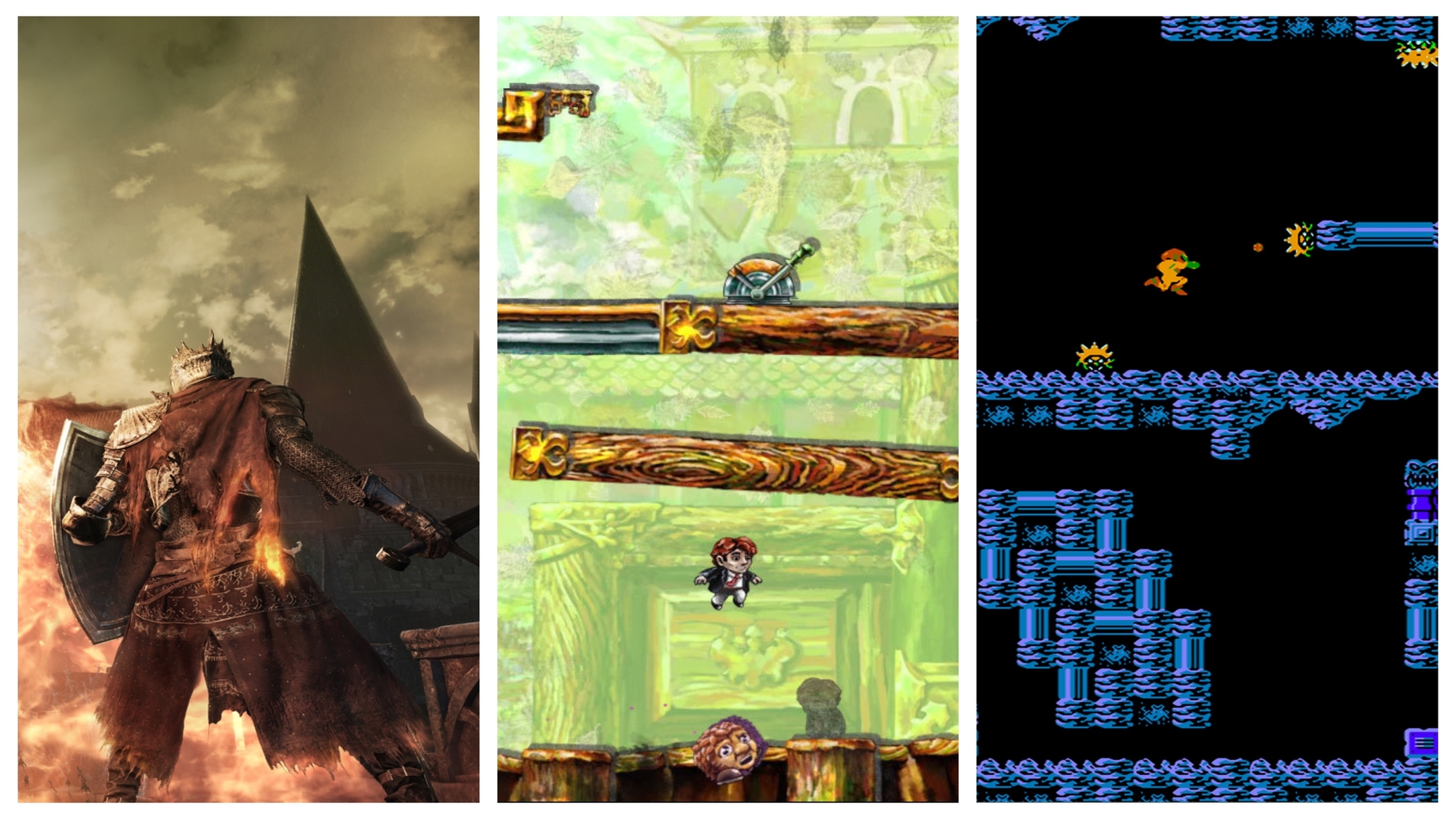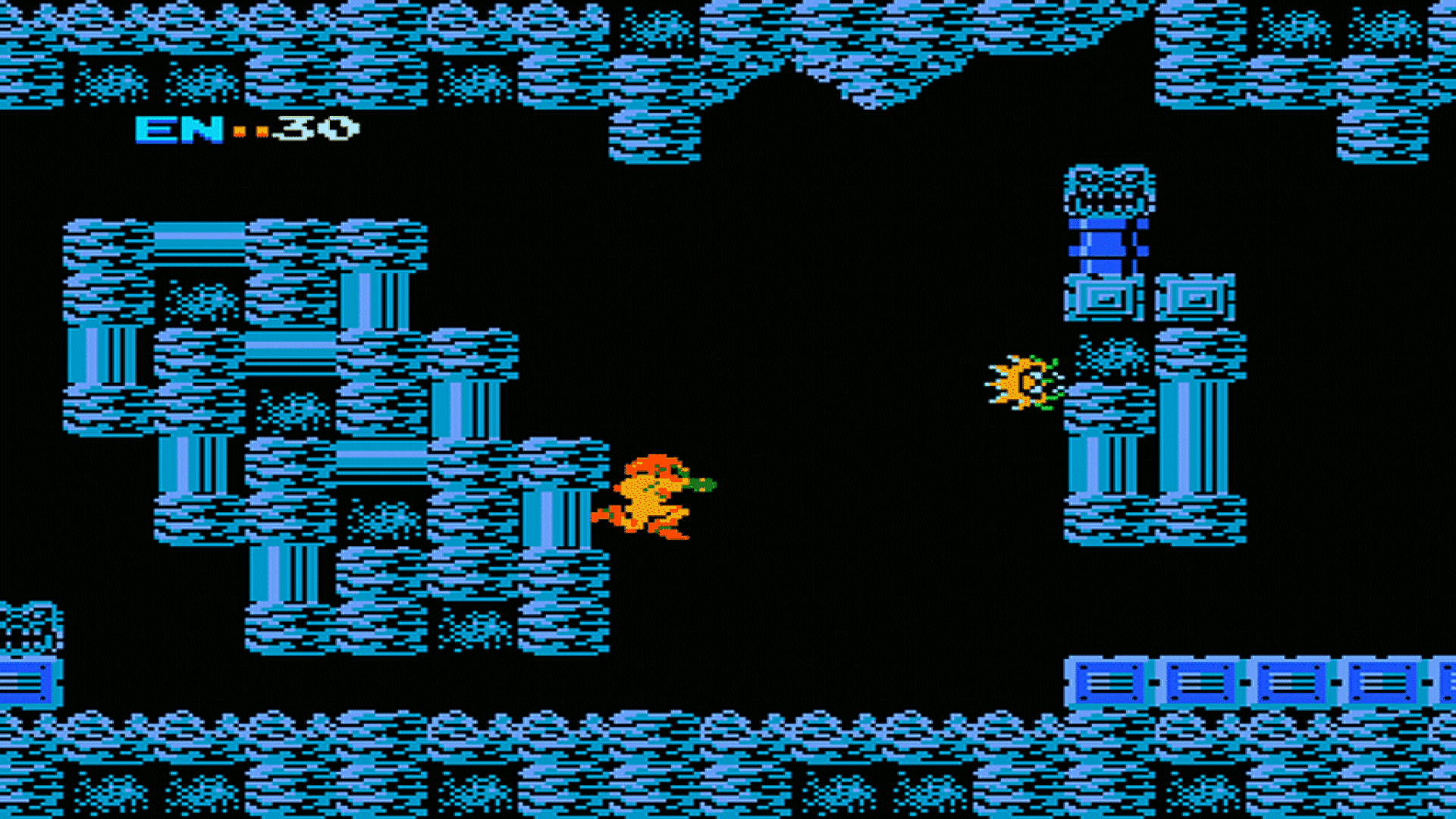5 Releases That Changed Indie Games Forever
With no such thing as original thought, how has the independent industry been influenced by its preceding canon?

The lines between game genres are becoming increasingly blurred. That’s particularly true for indies, with developers steering games into new uncharted territory that could never be achieved by big developers with big budgets and big expectations. Yet it’s not hard to see patterns of influence. After all, developers will always be influenced by what’s come before, however unconsciously. And as more indie games are released, certain gameplay elements and styles recur time and again.
These, then, are the five games that have most influenced the indie scene – games that have defined genres, raised the bar, and set a precedent against which later releases are inevitably compared. These are the games that always seem familiar, even if you haven’t played them.
Metroid

Way back in 1986, Nintendo’s Gunpei Yokoi created a little game called Metroid that, in many ways, set the blueprint for a plethora of indie games some three decades later. Following the 2D platformer convention of the most popular games of the day, Metroid set itself apart with a core gameplay loop around an alien open world that slowly unlocked in a non-linear fashion through the collection of permanent power-ups. Following a Game Boy sequel in 1991, it was 1994’s Super Metroid on the SNES that perfected the balance between exploration and structured progression, paired with a bleak tone of terrifying isolation.
It was with Konami’s Castlevania: Symphony Of The Night for the PlayStation in 1997, though, that the genre came to be known as Metroidvania – a portmanteau of the two series. Here the core gameplay of Metroid was transposed against the backdrop of a glorious gothic castle, dripping with atmosphere, that slowly opened up further with each demonic upgrade of the lone hero’s powers. Even in this new setting, that structural essence remained as enticing as ever.
It’s the rewarding nature of Metroid that makes it so compelling. The challenge of exploration and navigation leads to the reward of a new toy that’s not only fun to use but yields actionable results with every secret it uncovers. It’s as smart and concise in its design as it is addictive for the player.
And it’s a design that’s proven to work in any number of settings. Cave Story, first released in 2004, paid homage to the earlier Nintendo title, while Axiom Verge from Thomas Happ was heavily inspired by the same game, with its lonely scientist delving into a frightening alien world. Other developers have stretched it further, from the action-packed 3D side-scroller Shadow Complex, to the serenely fantastical yet tricky Ori and the Blind Forest. The vibrant, Mexican-inspired Guacamelee! and the forthcoming Gato Roboto that sees you playing as a cat in a robotic suit also take the genre’s tropes to new heights.
Dark Souls

From Software’s Souls games are, arguably, the most influential games in the modern age. They are synonymous with high difficulty, oppressive atmosphere, creepy bosses, strategic combat and minimalist storytelling, all of which have been absorbed into the collective consciousness of modern game developers.
Of course, indie games were already difficult before Dark Souls, but the series has certainly popularized challenge. Challenge which indie developers and gamers alike have risen to. The game’s difficulty has morphed into multiple memes; “it’s just like Dark Souls” can be heard from all corners of the Internet.
And while the games are certainly tough, they’re always fair thanks to a precise, strategic combat system that relies on the careful use of stamina to perform attacks, dodges, blocks and the like. That notion of calculated combat has permeated many games since. Take Hyper Light Drifter with its intense sword (and gun) combat, or the careful stamina management of Shrouded in Sanity or, more recently, Sinner: Sacrifice For Redemption. Then, there’s Titan Souls which takes Souls combat to its logical extreme: the magnificently imposing bosses only take one hit to kill if you can find their weakness, but equally so do you.
Salt and Sanctuary is perhaps the most Souls-like of any indie game since. Carefully precise combat, a desolate fantasy world of crumbling ruins, overwhelming bosses and a precious resource (salt) used to level up at bonfire sanctuaries dotted throughout the world. It is a Souls game in all but dimension – if Dark Souls were 2D it would look a lot like this.
It’s the Souls series’ attitude towards death, though, that’s particularly influential. Die in the game – and you will, a lot – and you lose the souls you collect from killing enemies. You can retrieve them at your place of death, but die again and they vanish. The critically acclaimed Metroidvania-type Hollow Knight follows a similar mechanic but it’s not quite as simple – you’re forced to kill the ghost of your deceased hero in order to recover lost currency. Likewise in Dead Cells, you collect cells from slain enemies that can only be banked at the end of each level. Die beforehand and your most precious commodity is gone forever. With Dark Souls – and the games it has inspired – death isn’t just a timing setback, a push back to the start of the level; it has serious ramifications for gameplay.
Rogue

The terms Rogue-like and Rogue-lite are bandied about plenty these days and applied to multiple genres. They seemingly exist as shorthand for a game with random elements based on ‘procedural generation.’ This process is essentially a way for designers to use mathematical algorithms to create a lot of content out of a little code.
Rogue wasn’t the first game to use this technique, but it’s certainly well known for it. Released in 1980, the text-based dungeon crawler featured dungeon layouts, monsters, and treasures, all procedurally generated so that no two playthroughs would be alike. Further, it introduced the idea of ‘permadeath,’ whereby death means all progress is lost and the player must start over from the beginning without their accrued equipment.
The game defined the tropes of a genre now known as Roguelikes. So specific are these characteristics that a set definition, known as The Berlin Interpretation, was devised at the International Roguelike Development Conference in 2008. Major principles include random environment generation, permadeath, turn-based action, grid-based movement and more. Games that adhere to only some of these principles are often called ‘Rogue-lite’ to differentiate them.
Derek Yu’s 2008 game Spelunky brought Roguelikes into the modern age. As the unnamed spelunker, players are tasked with delving deeper into randomly generated caves, collecting treasures and power-ups to aid further exploration. Though not strictly adhering to The Berlin Interpretation, it popularized many Roguelike elements that have spilled into other genres. Rogue Legacy, The Binding Of Isaac and Dead Cells have all taken the dungeon crawling of Rogue in intriguing and twisted directions, while the likes of Steredenn and City of Brass have blended the genre with shoot-em-ups and first-person adventures respectively. And then there’s No Man’s Sky that, while not a Roguelike, has taken procedural generation to an extreme degree.
The core elements of Roguelikes have become well-used tools in the increasing arsenal of indie developers, and that’s all down to Rogue.
Braid

Itself an iteration on the ‘save the princess’ narrative, Jonathan Blow’s 2008 game Braid served the indie game canon in many ways. Originally released on Microsoft’s Xbox 360, Braid was a flagship title of Xbox Live Arcade – a new online platform intended to support indie developers. It received both critical and commercial success, greatly contributing to the success of the indie revolution of the late 00s.
More than that, its gameplay has heavily influenced indie games ever since. Blow’s game incorporates and critiques many stereotypical elements, drawing on well-known concepts like princess rescue and jumping on enemies to defeat them before reframing them in an ambiguous, philosophical, and thought-provoking narrative. What has followed is a series of similarly smart puzzle platform games that build upon their 90s forbears in unexpected ways. These aren’t just platformers about jumping and running really fast; these are games that test your mind as much as your fingers.
Danish developer Playdead has succeeded with not one but two games of this type. 2010’s Limbo proved haunting as much for its minimalist narrative as it did its creepy black and white aesthetic, while its spiritual successor, the dystopian Inside (2016), kept players guessing right until its bizarre conclusion.
Other games have taken on a more lighthearted tone. The 2012 game Fez is a cute and colourful pixel art game with fiendish puzzles that cleverly play with perspective. 2016’s Unravel introduces the cute woollen protagonist Yarny, who navigates a realistically portrayed environment in an exploration of human memory. And 2015’s Typoman has a dark Limbo-esque tone but uses literal wordplay in its puzzle design.
Many indie developers lean on the familiarity of the platform genre to consider more complex themes. Blow’s recent release The Witness may be his masterpiece, but the legacy of Braid continues to live on.
Dear Esther

The term ‘walking simulator’ is pretty derogatory, but it’s also a fair summation of this particular genre of adventure game. Players are generally tasked, in first-person, with simply walking around an environment as the narrative unfolds. Generally, video games have become increasingly complex over the years, but the walking simulator genre seems incredibly basic – even archaic – in its design.
While The Chinese Room’s 2012 game Dear Esther was not one of the first walking simulators on offer (the genre dates back to the 1980s with titles like Graham Relf’s Explorer leading the fray), the explosion of popularity in this genre since Dear Esther’s release is indicative of the impact it had on similar developments. Originally labelled an interactive story, the player’s journey through Dear Esther takes them over the hills of a mysterious island while voiceover clips describe the fallout of a terrible accident. As you learn the history of the isolated land, and piece together your own role in that history, it’s difficult not to recognise the poignancy of the tale being told and become fully engulfed in the mystery at hand.
By stripping back the physical interactivity, our attention is focussed on the game’s narrative. And here Dear Esther truly flourishes, with its innate sophistication in nuanced storytelling and environmental narrative. It’s this environmental narrative, and the mysteries associated with it, that many players come to associate with the walking simulator now. While originally positioned as an exploration machine, Dear Esther cemented the idea of a mystery to be slowly unravelled through the objects the player comes into contact with; a story told exclusively by its setting.
Many games have followed suit, using this stripped-back approach to tell fascinating, gripping, adult stories. Gone Home, Firewatch, The Stanley Parable and What Remains Of Edith Finch – these are all games that elevate interactive storytelling to new heights, collectively defining a new genre. It’s no coincidence that they’re amongst the most celebrated award-winning games of the last few years.
In the grander scheme of things, the independent game development scene is one of a close-knit community so it’s no wonder so many creative tropes and ideas are borrowed and built upon before being passed on. In fact, it’s the fundamental process beneath much of the media we consume. However, indie games show the potential developers have to build on these ideas with their own, creating something far greater than the sum of its parts in the process. We owe a great debt to these initial pioneers of genre and mechanics, but the really exciting part comes from what we do with these passed-down traditions.
